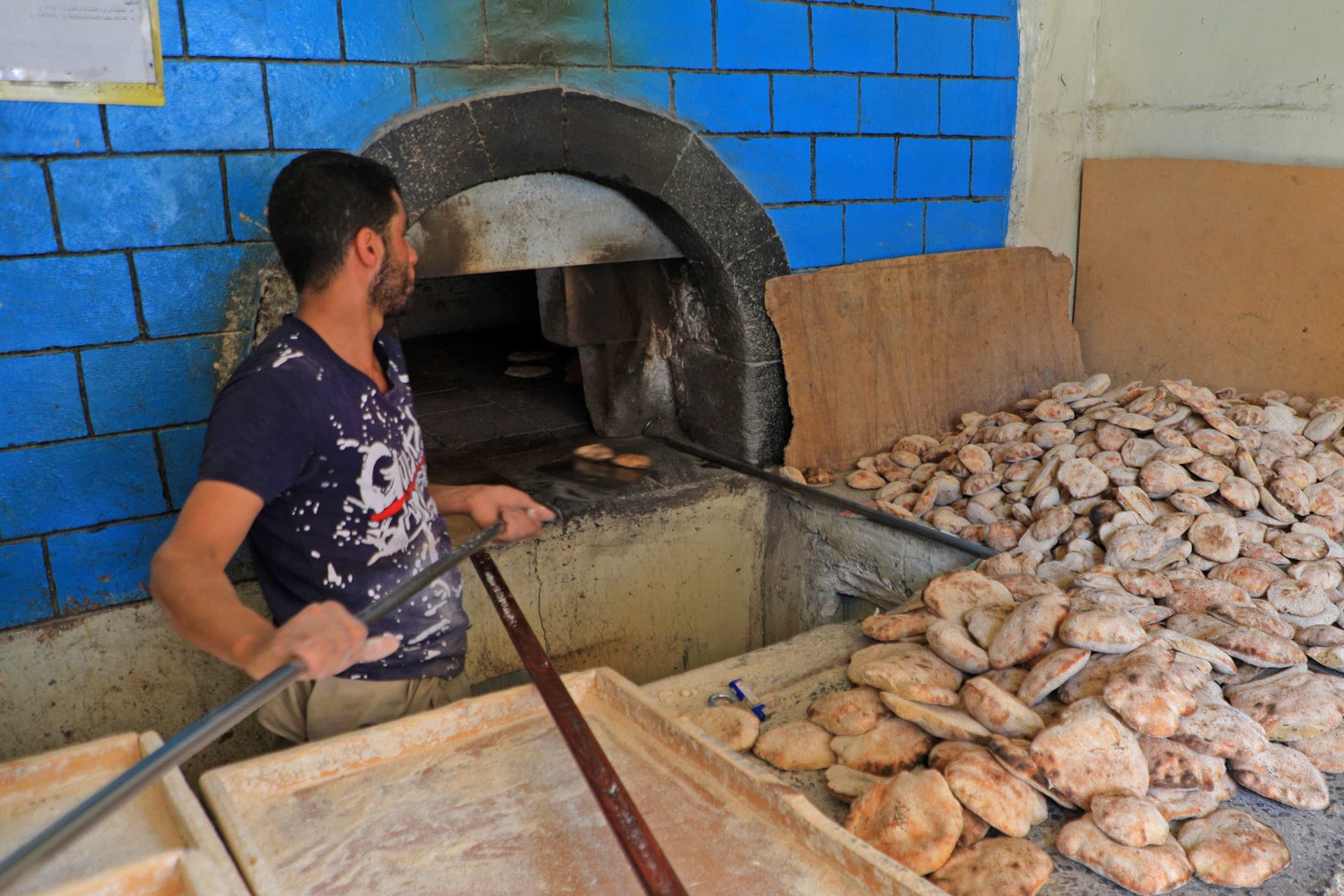أبوظبي، الإمارات العربية المتحدة (CNN)-- يرسل الغزو الروسي لأوكرانيا موجات صادمة عبر أوروبا وحتى الولايات المتحدة، لكن منطقة الشرق الأوسط قد تجد نفسها ضحية للصراع.
تقدم أوكرانيا وروسيا 23٪ من صادرات القمح العالمية، وفقًا لشركة "ستاندرد آن بورز العالمية" S&P Global. وتقترب أسعار المواد الغذائية العالمية بالفعل من أعلى مستوياتها في 10 سنوات، وتعني حصة البلدين في السوق أن أي اضطراب في الصادرات قد يتسبب في ارتفاع أسعار الحبوب.
يُطلق على أوكرانيا لقب "سلة خبز" أوروبا، لكن دول الشرق الأوسط أصبحت تعتمد أيضًا بشكل كبير على صادرات القمح الأوكرانية إلى مستوى يحذر البعض من ارتفاعه بشكل خطير.
كان الشرق الأوسط ثالث أكبر مشتر للقمح الأوكراني في موسم 2020-2021، وفقًا لبيانات وزارة الزراعة الأمريكية. ووصل أكثر من 40٪ من صادرات القمح الأوكرانية الأخيرة إلى الشرق الأوسط أو أفريقيا.
توقع صندوق النقد الدولي أن ترتفع تكاليف الطاقة وأسعار السلع في العديد من البلدان مع الصراع الروسي الأوكراني. وقال جوليان بارنز داسي، مدير برنامج الشرق الأوسط وشمال أفريقيا في مركز أبحاث "المجلس الأوروبي للشؤون الخارجية"، إن التأثير على الشرق الأوسط قد يكون أسوأ بكثير من دول أخرى.
وتعد مصر ولبنان وليبيا من بين أكبر مشتري القمح الأوكراني في المنطقة، مع دول مثل اليمن وسوريا تعتمد على مشتريات برنامج الغذاء العالمي للقمح الأوكراني كمساعدات.
كما تعد مصر، التي يزيد عدد سكانها عن 100 مليون نسمة، أكبر مستورد للقمح في العالم. السلطات هناك تحذر بالفعل من نقص. وروسيا هي المورد الرئيسي للقمح بالنسبة لمصر فيما تأتي أوكرانيا في المرتبة الثانية.
يمكن أن يؤدي النقص على مدى أطول إلى تدهور حالة الأمن الغذائي المتردية بالفعل في بعض بلدان المنطقة. يعاني ما يقرب من 69 مليون شخص في الشرق الأوسط وشمال أفريقيا من سوء التغذية، وفقًا لتقرير الأمم المتحدة لعام 2020، ما يمثل حوالي 9٪ من الإجمالي العالمي. والكثير منها في بلدان مزقتها النزاعات.
تقول منظمة الأمم المتحدة للأغذية والزراعة (الفاو) إن الجوع آخذ في الارتفاع منذ عام 2014 في المنطقة، مع تدهور سبل العيش بعد انتفاضات الربيع العربي ومرة أخرى بعد جائحة كورونا. وقدرت منظمة الأغذية والزراعة معدل انتشار سوء التغذية بالمنطقة في عام 2020 بنسبة 15.8٪، مقارنة بالمتوسط العالمي البالغ 9.9٪.
وقال بارنز داسي: "القضية الحقيقية هنا هي أن هناك أزمة إنسانية ضخمة تتكشف في جميع أنحاء المنطقة، وهذه الاحتياجات لم يتم تلبيتها بالفعل".
وقال محللون إن الدول والجهات المانحة قد تكون قادرة على شراء الحبوب من مصادر أخرى لكن ارتفاع الأسعار قد يعيق شبكة من المستوردين تعاني بالفعل من نقص التمويل.
وقال بارنز داسي: "عندما لا تُلبى الاحتياجات الحالية بالفعل، من الصعب أن نتخيل أنك ستكون قادرًا على تأمين هذه الدفعة الجديدة الهائلة اللازمة لتلبية الاحتياجات الجديدة".
قد تؤدي الاضطرابات في الموانئ الرئيسية في البحر الأسود، المتاخم لكل من روسيا وأوكرانيا، بالإضافة إلى ارتفاع تكاليف الطاقة، إلى تعقيد الوضع.
وحذرت المتحدثة باسم برنامج الغذاء العالمي للشرق الأوسط عبير عطيفة من أن المنطقة على وجه التحديد ستكون ضحية كبيرة للصراع الروسي الأوكراني، وسيكون القمح السلعة الأكثر تضررا.
وقال المستشار السابق لوزارة التموين المصرية، نادر نور الدين، لشبكة CNN: "قد يكون هذا درسًا جديدًا [للدول العربية]، بأن علينا موازنة المشتريات، حتى نتمكن دائمًا من تنويع الإمدادات وتأمينها بشكل دائم إذا كان هناك الصراعات".
